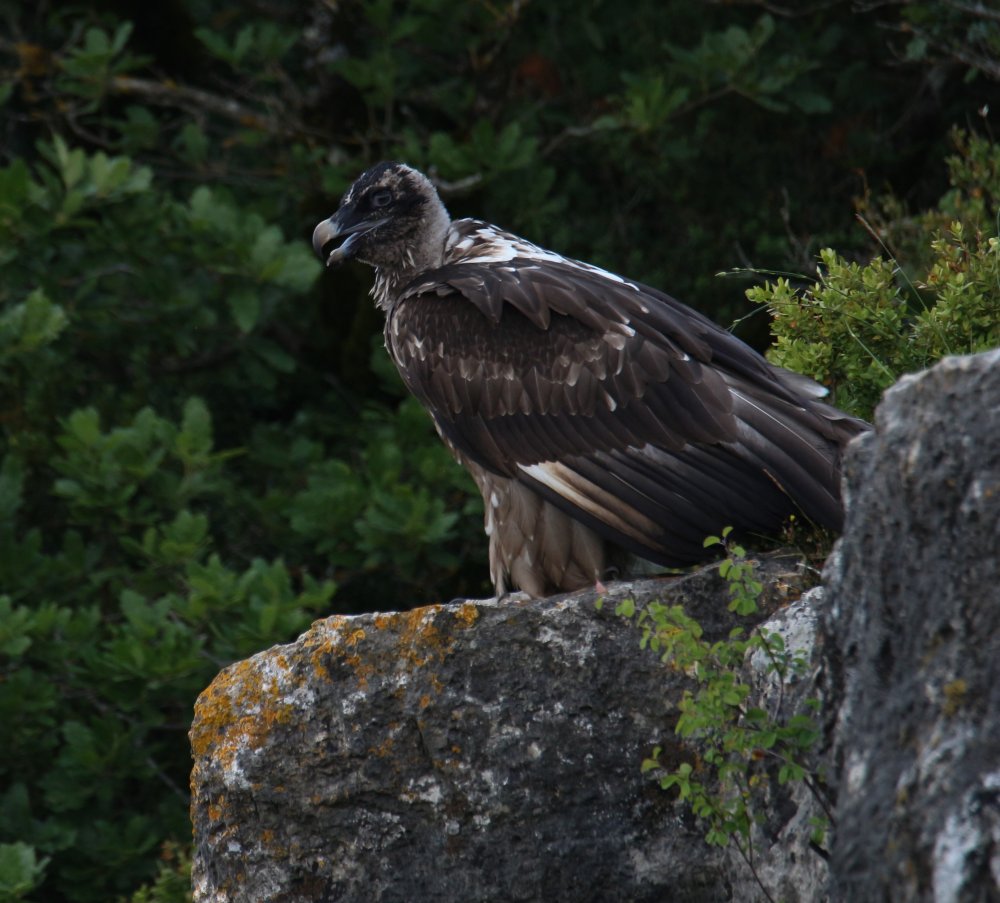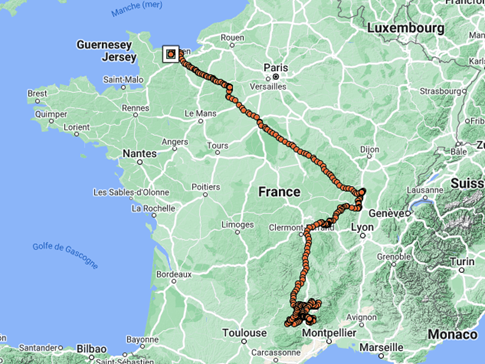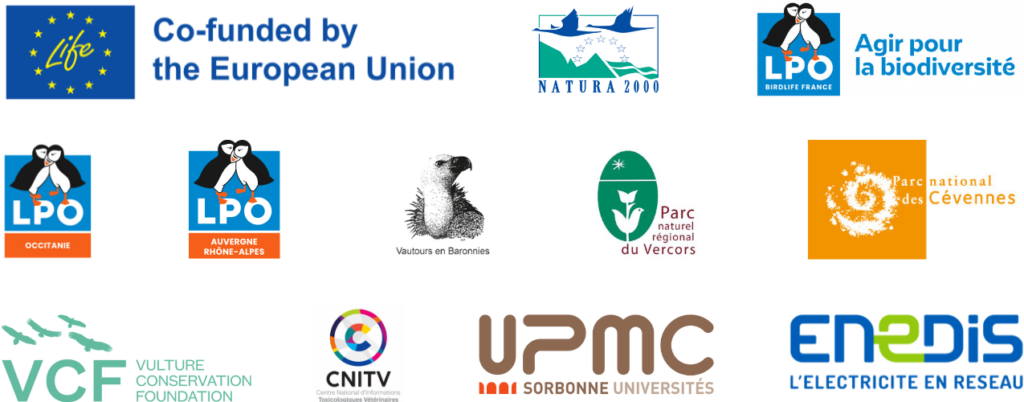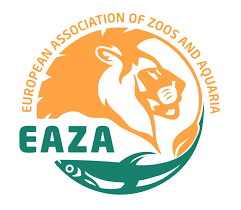
Over the past few months, the LIFE Gyp’Act project released eight Bearded Vultures in Southern France and Eastern Pyrenees. These vultures come from various zoos and captive breeding centres connected to our Bearded Vulture Captive-Breeding Network. One of them, named Sargas, was among the released birds, but his journey had a few twists.
Release of Bearded Vulture “Sargas”
The first releases of this season occurred in early May within the LIFE Gyp’Act project. Two captive-bred juveniles were set free in the Trevezel gorges in Aveyron at the territory of the Grands Causses Regional Natural Park. Sargas, released on 4 May 2023, is a male who comes from the Bearded Vulture Captive Breeding Center of Guadalentín, managed by the Vulture Conservation Foundation (VCF) on behalf of Junta de Andalucía. He was 94 days old at the time of release.
An effort to restore the Bearded Vulture Alpine and Pyrenean populations
The LIFE Gyp’Act project aims to strengthen the Bearded Vulture population between the Alps and the Pyrenees by releasing 60 captive-bred juveniles in various locations across Southern France and the Pre-Alps. Building on the success of the LIFE GypConnect project, which established new breeding pairs, this initiative released a total of 46 Bearded Vultures and formed six pairs, contributing to the species’ recovery.
Bearded Vultures are known for longevity, and establishing new breeding populations takes time. Young vultures are released using the “hacking method” at about 90 days old. Before taking their first flights, they spend several weeks in a hacking cave, mimicking their natural environment. These birds will likely return to the same territory to breed when they reach sexual maturity in 7-10 years. Until then, they will probably explore mountainous regions nearby and further away.
Sargas takes flight and ventures

About a month after his release, Sargas took his first flight on 2 June at 123 days old. The LIFE Gyp’Act team closely monitors his movements and behaviour, both through on-site observations and a GPS transmitter on his back, providing precise data on his actions.
Initially, Sargas was a bit reserved when taking off, but he gradually gained confidence. Sargas surprised everyone by departing from the Causses early on an extensive journey across France to Normandy. This behaviour is typical of young Bearded Vultures, but it also poses risks such as difficulties in finding food.
Bearded Vulture Sargas needs help
A month after his first flight, Sargas flew long distances without eating for days, causing concern. The project team collaborated with local colleagues to provide food and check on him in early July. Eventually, they decided to collect Sargas and place him in a wildlife care centre in the PACA region near the Grands Causses. After a few weeks of recovery to gain strength, the team decided to release.
Sargas returns to the wild
The plan was to set him free at the release site in the Gorges du Trévezel, but that changed. Since Calandreto had been present there for several days and was displaying aggressive behaviour toward the young male Selbo for most of the day, the team moved a few km away to the Jonte Gorges at the Cassagnes feeding site for the release so that Sargas could take off in peace.
Upon release, Sargas took flight, spending some time observing his surroundings, and had a small meal before continuing his journey. He landed on a rock briefly and then flew on until the evening. The project team continues closely monitoring his movements to study his behaviour and help ensure his well-being.
The LIFE Gyp’Act partnership
The LIFE Gyp’Act builds on the legacy of the LIFE GypConnect and ensures the continuity of the conservation measures implemented so that Bearded Vultures continue to flourish.

LIFE Gyp’Act is a 13M€ project, co-funded by the EU’s LIFE programme, that will run until 30 November 2028. Project partners are LPO – Ligue pour la Protection des Oiseaux as coordinator beneficiary, and the Vulture Conservation Foundation, Association Vautours en Baronnies, LPO Auvergne-Rhone-Alpes, LPO Occitanie, Sorbonne Université, ENEDIS, Centre National d’Informations Toxicologiques Vétérinaires, Parc National des Cévennes and Parc Naturel Régional du Vercors as associated beneficiaries.








